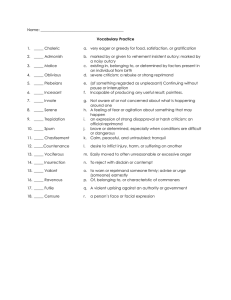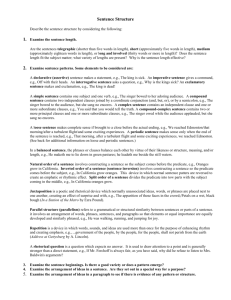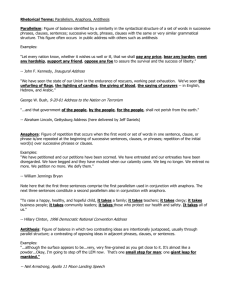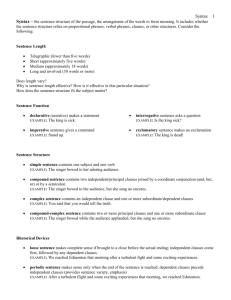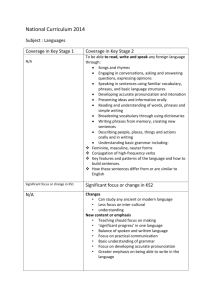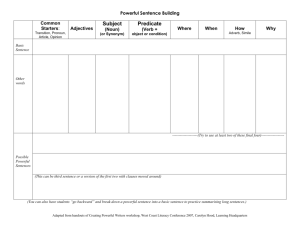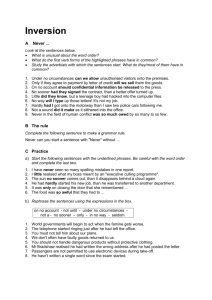Some Basic Terms for Analyzing Literary Language
advertisement
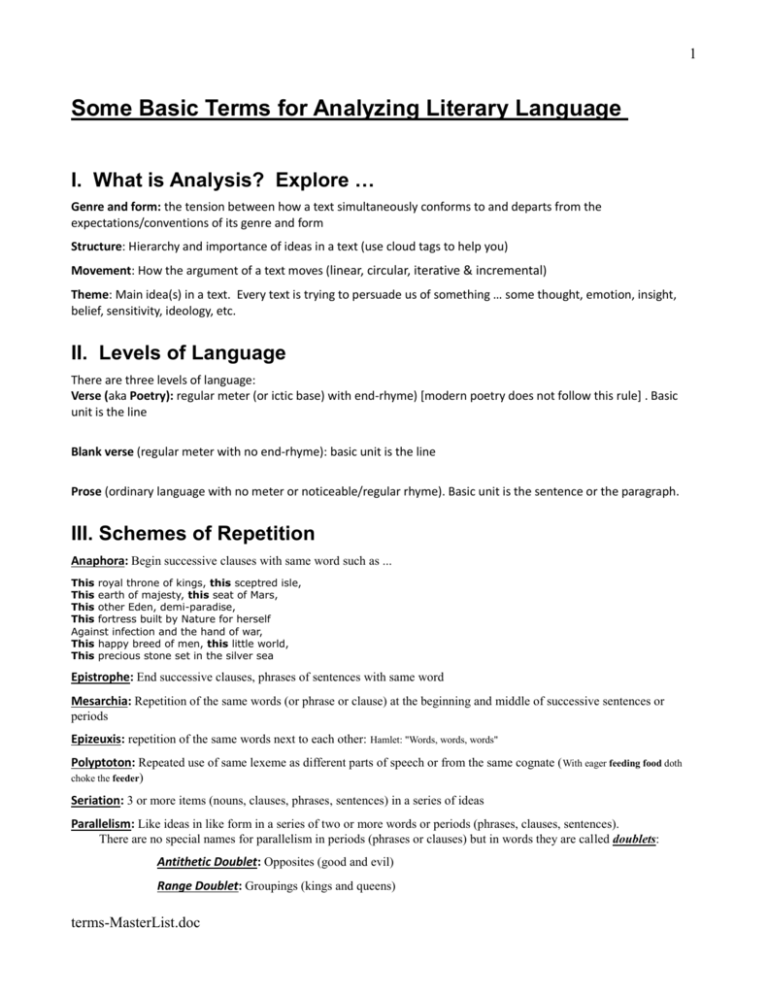
1 Some Basic Terms for Analyzing Literary Language I. What is Analysis? Explore … Genre and form: the tension between how a text simultaneously conforms to and departs from the expectations/conventions of its genre and form Structure: Hierarchy and importance of ideas in a text (use cloud tags to help you) Movement: How the argument of a text moves (linear, circular, iterative & incremental) Theme: Main idea(s) in a text. Every text is trying to persuade us of something … some thought, emotion, insight, belief, sensitivity, ideology, etc. II. Levels of Language There are three levels of language: Verse (aka Poetry): regular meter (or ictic base) with end-rhyme) [modern poetry does not follow this rule] . Basic unit is the line Blank verse (regular meter with no end-rhyme): basic unit is the line Prose (ordinary language with no meter or noticeable/regular rhyme). Basic unit is the sentence or the paragraph. III. Schemes of Repetition Anaphora: Begin successive clauses with same word such as ... This royal throne of kings, this sceptred isle, This earth of majesty, this seat of Mars, This other Eden, demi-paradise, This fortress built by Nature for herself Against infection and the hand of war, This happy breed of men, this little world, This precious stone set in the silver sea Epistrophe: End successive clauses, phrases of sentences with same word Mesarchia: Repetition of the same words (or phrase or clause) at the beginning and middle of successive sentences or periods Epizeuxis: repetition of the same words next to each other: Hamlet: "Words, words, words" Polyptoton: Repeated use of same lexeme as different parts of speech or from the same cognate ( With eager feeding food doth choke the feeder) Seriation: 3 or more items (nouns, clauses, phrases, sentences) in a series of ideas Parallelism: Like ideas in like form in a series of two or more words or periods (phrases, clauses, sentences). There are no special names for parallelism in periods (phrases or clauses) but in words they are called doublets: Antithetic Doublet: Opposites (good and evil) Range Doublet: Groupings (kings and queens) terms-MasterList.doc 2 Pleonastic Doublet: Overlapping meanings / synonyms (dictionaries and lexicons) Amplification: Heaping up of examples or modifiers (could also be connected with parallelisms and seriation) IV. Figures of Speech (Figurative Language): Tropes Trope: An artful deviation from the ordinary or principal signification of a word by means of wit (the intellectual faculty of finding similarities between things or of making connections between things). Metaphor Implied comparison Conceit Extended or sustained metaphor Simile Explicit comparison of one thing to another Synecdoche A whole is represented by naming one of its parts (“the blonde”) Personification Reference to abstractions or inanimate objects as though they had human qualities or abilities Reification Reference to abstractions or inanimate objects as though they had human qualities or abilities. Antanaclasis Repetition of a word in two different senses. Paronomasia Using words that sound alike but that differ in meaning (punning). Syllepsis Using a word differently in relation to two or more words that it modifies or governs (sometimes called zeugma). Onomatopoeia Use of words whose sound correspond with their semantic value. Hyperbole Use of exaggerated terms for emphasis or effect. Litotes Understatement used deliberately. Rhetorical Question Asking a question for a purpose other than obtaining the information requested. Irony Using language in such a way as to convey a meaning opposite of what the terms used denote (often by exaggeration). Oxymoron Placing two ordinarily opposing terms adjacent to one another. A compressed paradox. Paradox An apparently contradictory statement that contains a measure of truth Euphemism Pleasant name for an unpleasant thing Dysphemism Unpleasant name for a pleasant thing Hyperbole Deliberate exaggeration without the intent to deceive Paradox An explicable—and apparent—contradiction terms-MasterList.doc 3 V. Syntactic (sentence-level) variations or STYLE (aka language) Left branching: more words to the left of the main verb than to the right Right branching: more words to the right of the main verb than to the left Hypotaxis (adj is hypotactic): subordination (who, that, which, if, since, because, however, when, since etc.) Parataxis (adj is paratactic) coordination (and, or, but, colon, semi-colon, period ) Ciceronian: relatively long sentences, hypotaxis (subordination), amplification, higher readability Senecan: relatively short sentences, parataxis (coordination, lower readability) Readability: There are various ways to calculate it, but regardless, every algorithm examines average number of words per sentence and average number of syllables per word. Lexis: Vocabulary used in a text Sesquipedalian: literally, “6-footed” but figuratively, “awkward” terms-MasterList.doc
